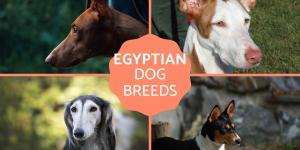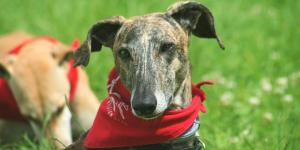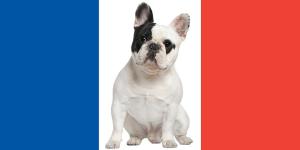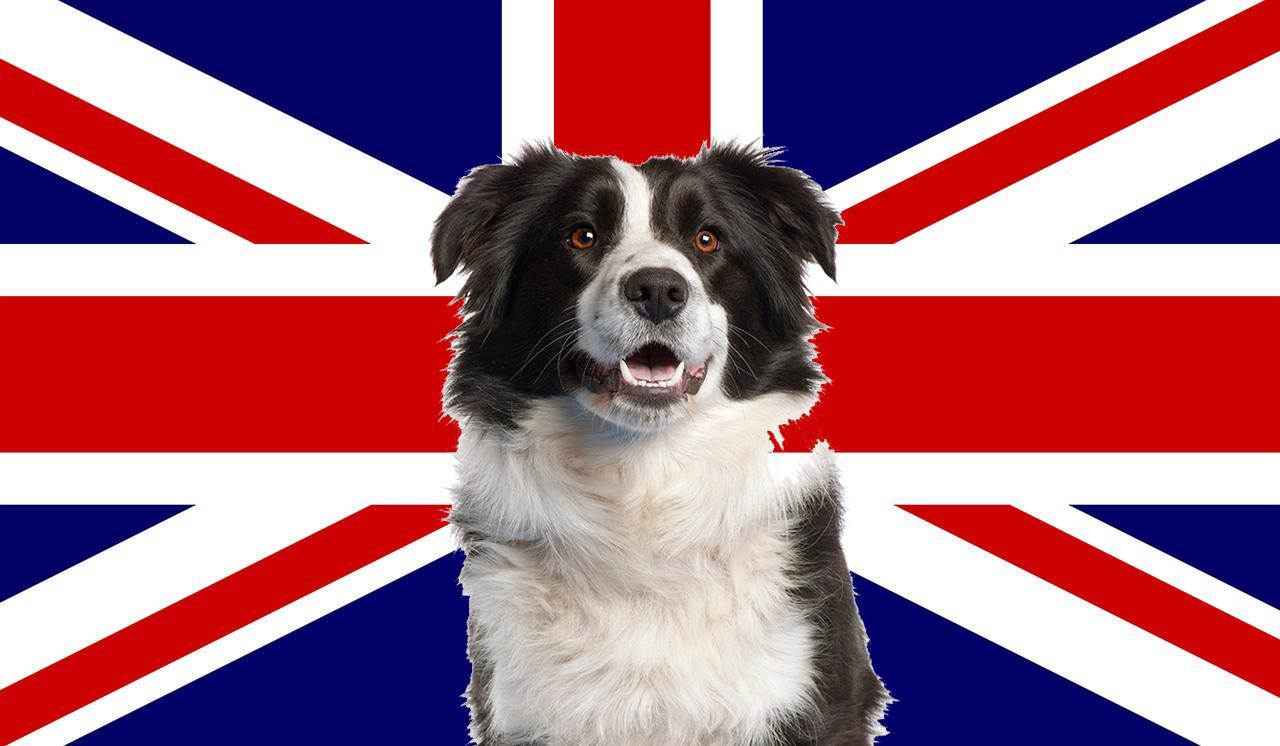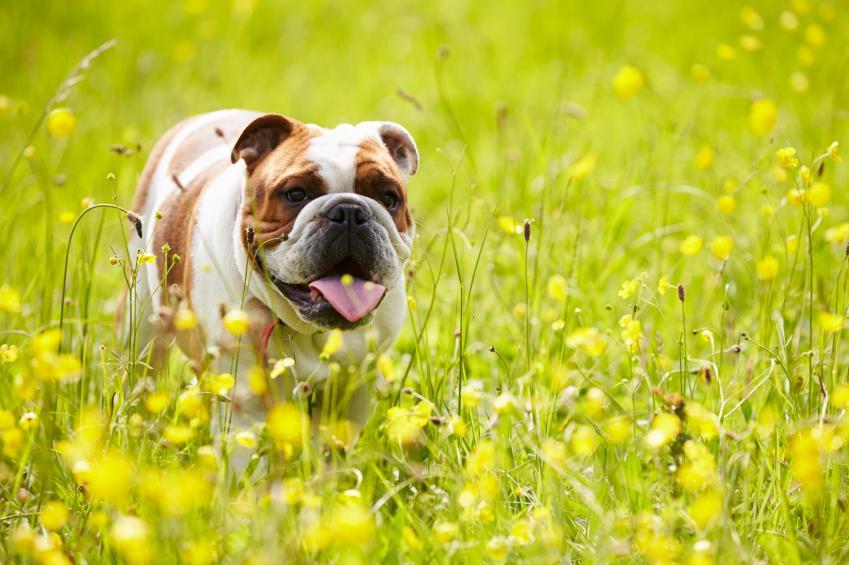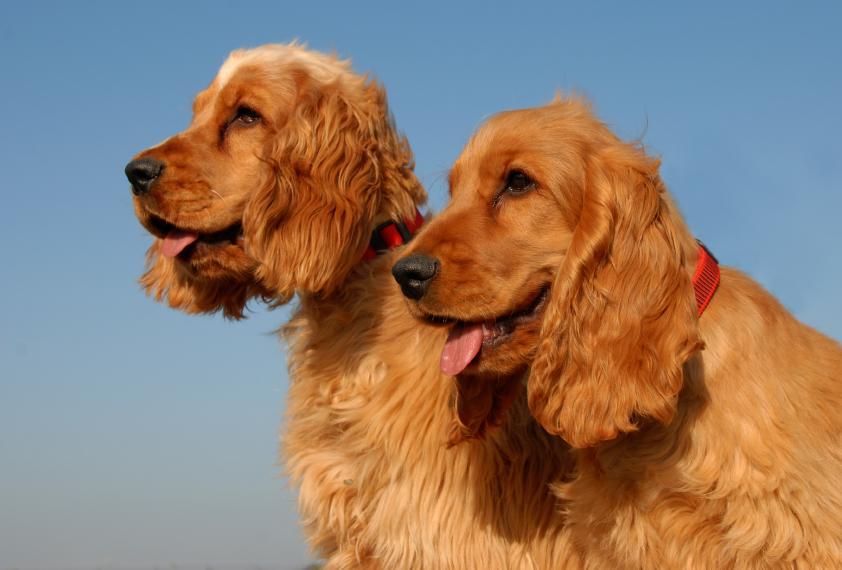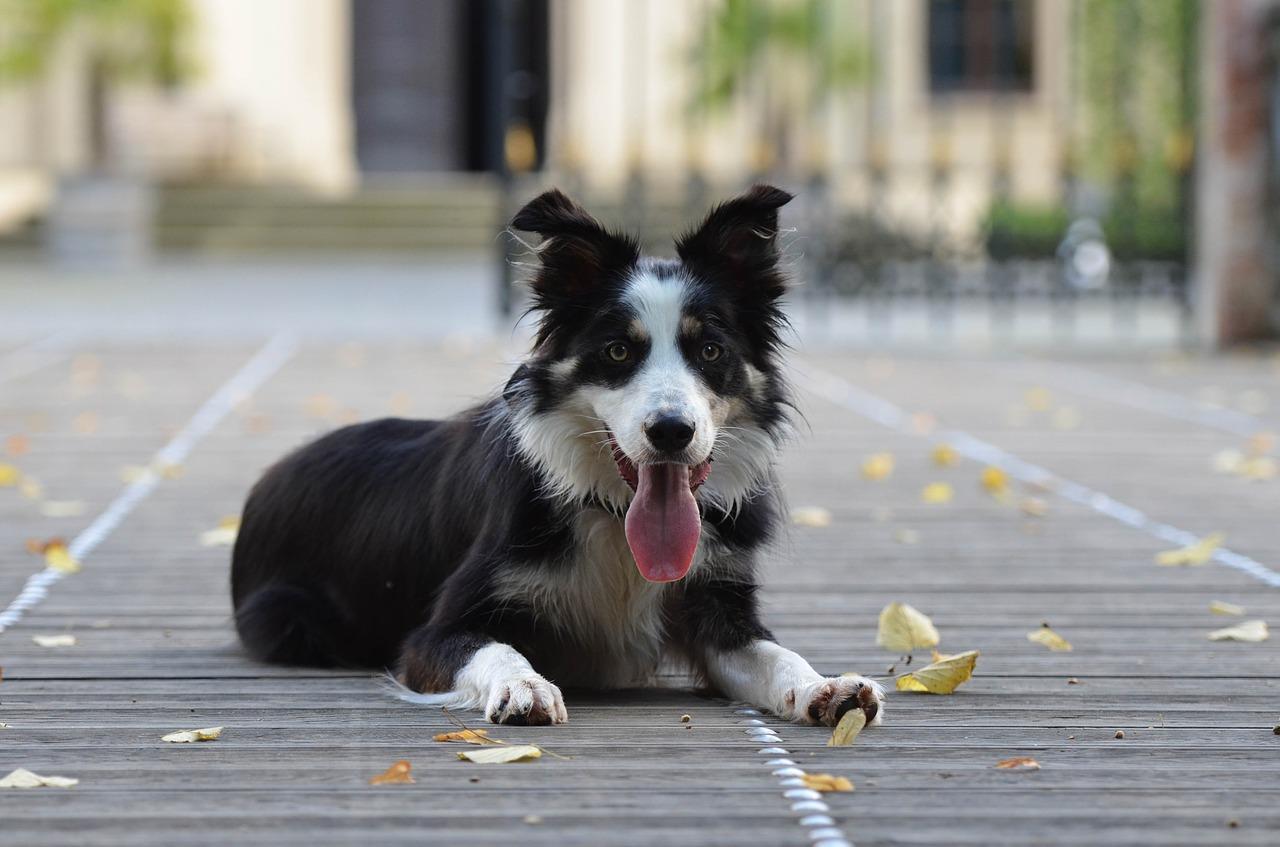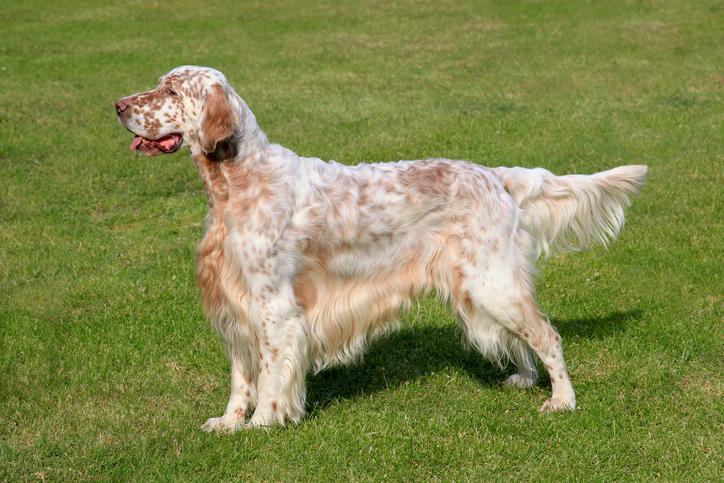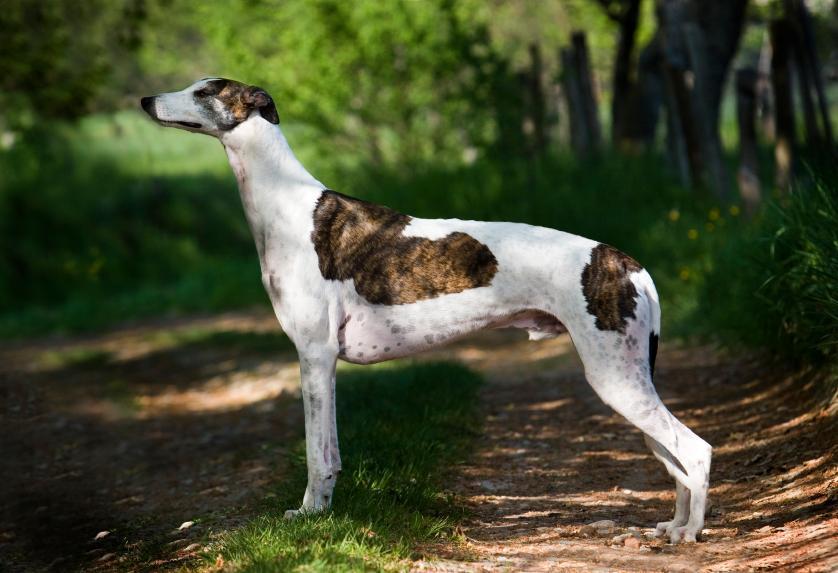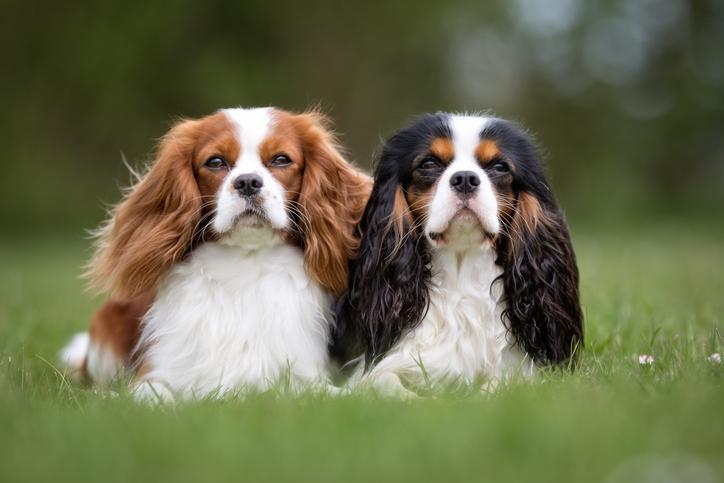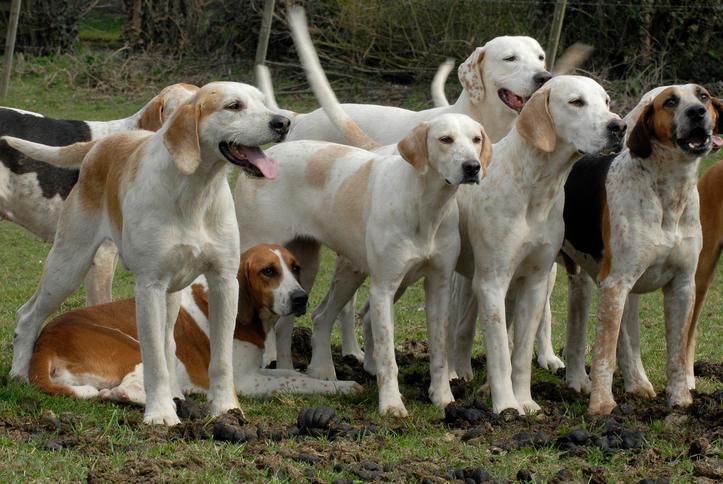English Dog Breeds List - With Pictures


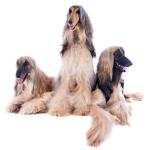
See files for Dogs
There are around 350 officially recognized dog breeds in the world with many more on their way to reaching this status. This is of course not to mention the many dogs with mixed heritage. It is difficult to pinpoint exactly where each breed originates. There are many breeds associated with parts of Asia or the Americas which may have actually been the result of early international travel and colonization[1]. What we can readily assert is the importance England and Great Britain had in establishing dog breed standards, especially during the Victorian era.
We see why this is so with our AnimalWised 20+ English dog breeds list which brings you some of the most popular British dog breeds. Although they come from the UK, they are now popular all over the globe. You can learn about their origins and characteristics, as well as see pictures of what they look like.
- Why are English dog breeds so popular?
- English Bulldog
- Yorkshire Terrier
- English Cocker Spaniel
- Border Collie
- English Setter
- English Mastiff
- English Greyhound
- King Charles Spaniel
- English Foxhound
- English Bull Terrier
- Other English dog breeds
Why are English dog breeds so popular?
It is far from true to say that the domestication of the canine came from the United Kingdom in countries such as England. However, it is true to say that they were particularly good at recording what they did and organizing their breeding programs. The oldest canine council in the world is the The Kennel Club, the official kennel club of the U.K.
Founded in 1873, The Kennel Club worked to establish many breeds types, including those on our 20+ English dog breeds list. Although many individuals, groups and whole cultures had certain breeding habits and practices, it wasn't until the 19th century that such practices became as rigorous as they are today. Although dogs has been companion animals for a long time, much of their activity was bound to working dog practices.
It was during the Victorian period that dogs were bred in earnest for their pure companionability. Unfortunately, much of this led to prioritizing looks over other factors, leading to dogs like the British Bulldog which is known for its short snout and accompanying breathing difficulties.
Another reason why British dog breeds are so popular is due to the far reach British Empire. Many people brought their companion dogs to other countries, as well as bringing back dogs from other regions of the world. This meant that different breeds could be crossed to create new specimens.
While English dog breeds are very popular, they are not the only dogs from Britain. Find out about another part of the United Kingdom's canine traditions with our article on Scottish dog breeds.
1. English Bulldog
Perhaps the most quintessential of all English dog breeds, the English Bulldog is sometimes known as the British Bulldog. However, we should take this opportunity to differentiate between British dog breeds and English dog breeds. England is a country in itself, but English is only used for those pertaining to England. British can refer to any part of the United Kingdom (U.K.). For example, the Scottish Deerhound is considered a British dog, but is not an English breed.
The English Bulldog is sometimes known as the Bulldog and it appears all bulldog types originate from the breed. However, the breed standard we have now is quite physically distinct from its ancestors. Used in the vile practice of bull baiting, the original dog was more lithe and used their large frame to try to pin a bull's nose to the ground. This meant aggression was encouraged, but after the outlawing of the sport in 1835 the breed changed considerably.
Nowadays, Bulldogs are stockier in appearance and have a shorter snout associated with brachycephalic breeds. This means they have the related health problems of this type of dog. Their temperament, however, is now recognized for being very even, wonderful with families and dignified. They are great guard dogs and, although sometimes stubborn, tend to get on well with others. They are greatly associated with English culture in general.

2. Yorkshire Terrier
The Yorkshire Terrier is a small breed which weighs between 3 and 4 kilograms. Their lifespan tends to vary between 10 and 15 years. They are very affectionate with children and have a very playful personality. Their fur has a distinctive pattern with a dark gray/blue coloration from the head along the back and a golden tone on the rest of their body. The way their fur grows around the face gives them the appearance of a lion's mane. They are a relatively healthy breed and are not known for getting sick. This does not mean regular visits to the veterinarian are unnecessary.
Commonly known as Yorkies, these dogs were bred in the North of England by working class folk. They could be found in the mills and plants the North of England has been famous for. Fond of attention, they are energetic and need according exercise and grooming routines.
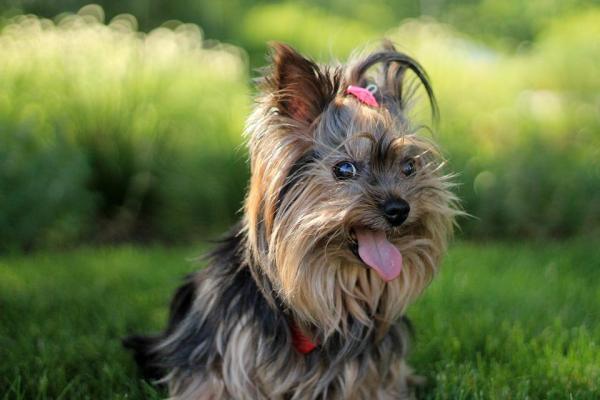
3. English Cocker Spaniel
A very old English dog breed, the next on our list of 20+ English dog breeds is the English Cocker Spaniel. They were first used as a hunting dog, driving game towards the hunters. They are a sturdy and compact dog with a range of coat colorations. They are intelligent and alert, as you would imagine a dog used in hunting to be. They are loyal and can be wonderful companions, but like any dog, need adequate socialization to get on well with others. They are known for often possessing a desire to dominate. It is even believed that golden Cocker Spaniels can sometimes be aggressive[2].
Their lifespan is generally between 10 and 12 years. Cancer and old age are the most common causes of death, but they may also suffer from eye and heart problems during their lifetime. As working dogs they respond particularly well to training and can be very effective if given the right kind of positive reinforcement.
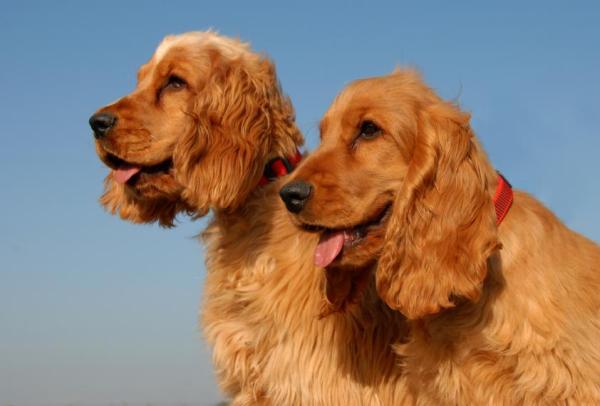
4. Border Collie
According to the dog behaviorist Stanley Coren, the Border Collie is the most intelligent dog breed in the world, not just with English dog breeds. They were originally bred as a herding animal due to their energetic behavior, athletic ability and good response to being given orders. They most commonly have a black coat with white sections. Their coat can also be either short or long haired. Merle coat patterns are also possible, with red and chocolate coloration not being uncommon either.
While considered an English dog breed, they originate in the border territory with Scotland. Their intelligence means they are particularly good at herding. They even implement something known as ‘the eye’, a stare which intimidates herd animals and can be used to corral them efficiently. However, they are not aggressive dogs and are wonderful family pets. The stamina they exhibit in fields and on farms means they need adequate exercise if they are to be kept as family pets.
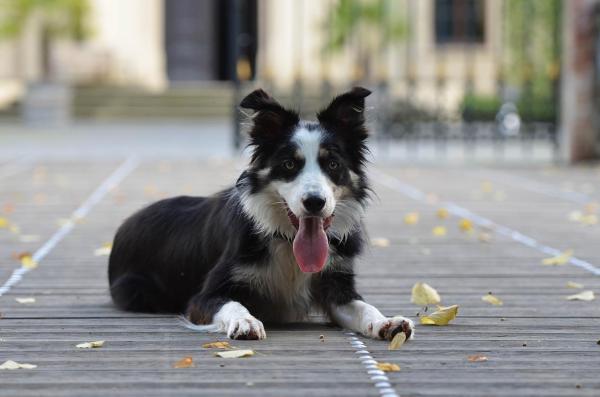
5. English Setter
The English Setter is a very agile, intelligent and skillful dog breed. These characteristics mean they are another English dog breed which has been employed as a hunter. Currently, however, they are more usually adopted as a family pet, often due to their elegant look. Their coat can be black and white, tricolor or white with brownish markings. These markings develop as they grow into their adolescence. Their ears can be either long or short. Their snout is elongated, they have a prominent nose and their eyes are quite rounded. Male and females have slightly different facial structures, with the males being slightly stockier.
They are gentle animals with a regal disposition, but can be distracted and mischievous. They need plenty of training and exercise, so are not considered good city dogs. Their health in general is very good, but they can suffer from some diseases such as deafness, gastric dilation and skin problems.
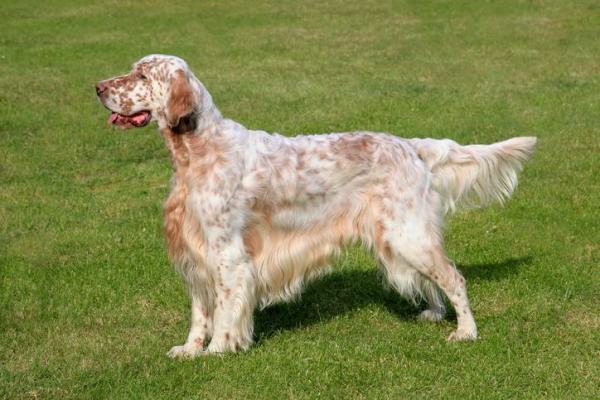
6. English Mastiff
The biggest on this English dog breeds list, the English Mastiff was used as a war dog more than 2000 years ago. This makes it an ancient dog breed and one of the oldest listed here. As you can see in the picture below, they have a large square head with a dewlap (a fold of skin under the chin, somewhat like a rooster's wattle). They are often of a tan coloration, but are known for their black mask markings. They can come in a range of other colors.
Although an excellent watchdog, the English Mastiff is known for being friendly, gentle and tender. They may be more likely than other breeds to suffer from ectropion, gastric torsion and kidney stones. However, they are generally pretty healthy and strong dogs. This breed has been under threat of extinction a few times in its history. After WWI, the breed was essentially extinct outside of the U.K. and rationing during WWII also weakened their number. However, a concerted postwar effort meant the breed size enlarged and now it is a popular dog worldwide.
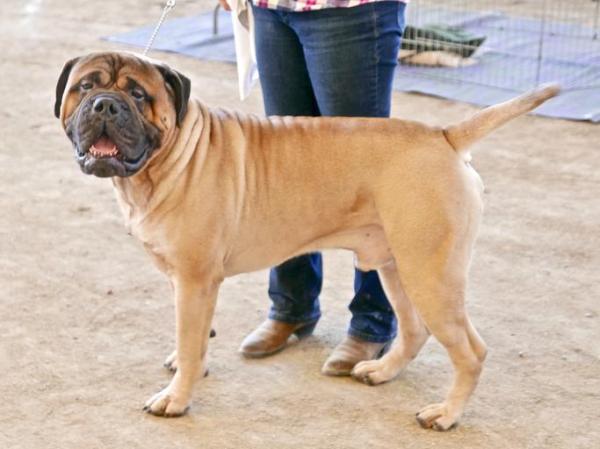
7. English Greyhound
The English Greyhound is well-known for its athletic ability, elegant appearance and speed. Their head is elongated and narrow, with dark eyes and long ears which can droop a little. They bond well with their owners, but are also an independent breed who need their own space. This does not mean they are not tender and affectionate animals. Their fur can be a range of colors, but their grey coloration (particularly around the snout and face) will develop more as they age.
Like the English Bulldog, these dogs are often simply known as greyhounds. Many have been used as racing dogs and, for this reason, there is a greater need in this breed than some others for rescuing. Racing dogs which are no longer fit for racing may be killed, but those which are not often find themselves in shelters. Adopting a greyhound means they will need time to adjust, but many do so very well and will begin to truly enjoy companionship. You will often see them give a characteristic ‘smile’ when content.
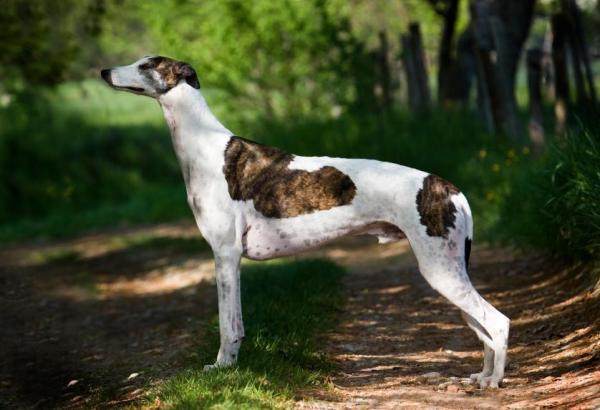
8. King Charles Spaniel
The King Charles Spaniel is also known as the English Toy Spaniel. While they are an established English breed, they are thought to have originated from dogs imported from Asia. Named after King Charles II of England, they are unlikely to be the same breed as you may see in contemporaneous paintings of the Stewart King and his court. They are a dog of small stature, but a robust frame and feathered appearance. Their ears are long and drooping while their snout is short. Despite the reputation as a gentile lapdog, they enjoy outdoor activity and exercise.
Their temperament is extremely docile and affectionate. They enjoy the company of others and are quite friendly with strangers. They need exercise, but will also spend a lot of time on their own and will have periods where they don't want to be disturbed. Health problems include a propensity towards various eye and respiratory diseases. One pathology is a hereditary disease known as syringomyelia[3]. This is a disease which causes cysts to grow on the spinal cord and is life threatening.
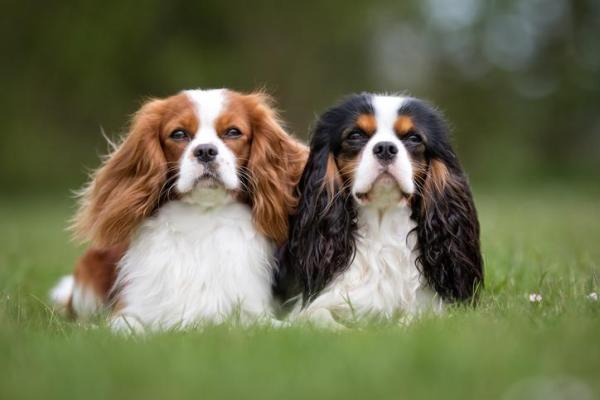
9. English Foxhound
The English Foxhound was also used as a hunting dog. The prevalence of hunting dogs in this list is due to the proliferation of the sport in England. They are well-known for being able to travel long distances without growing tired easily. Additionally, their great agility and strength means they can both traverse the hunting plains as well as avoid being crushed by pursuant horses. They usually measure about 60 cm (23.6") in length at adulthood and weigh around 40 kg (88 lbs).
Their coat is most often tricolor white, black and brown. They are generally a very healthy animal and do not get sick easily. They can be particularly noisy and will bark a lot. English Foxhounds love the outdoors and require a lot of exercise. All of these traits mean they are not well-suited to city and/or apartment living.
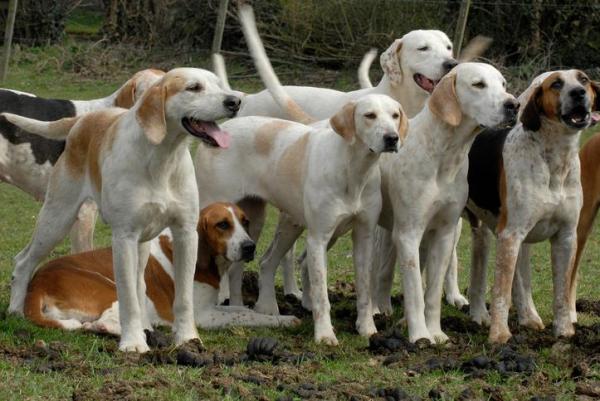
10. English Bull Terrier
Considered to be in the group of Pit Bull breeds and types, the Bull Terrier completes our list of English dog breeds. In Spain, they are considered a ‘potentially dangerous dog’, but are nonetheless still popular in the country. As with many Pit Bull type dogs, this characterization is flawed at best. Their temperament means they can be stubborn and full of energy. They need appropriate socialization and training from the very beginning. They are not recommended for those who are unable to meet these needs adequately.
If this breed is socialized, they can be very loving, loyal and great with children. They are also playful and brave, part of the reason they had been used as military dogs in the past. They can be of a range of colors and often show brindle patterns on their coat. While Bull Terrier are also common, but it should be noted this color of the breed has a 1 in 5 chance of being deaf, so they need to be tested when young. They are noted for their unique shaped head which is sloped, rounded and somewhat resembles an egg.
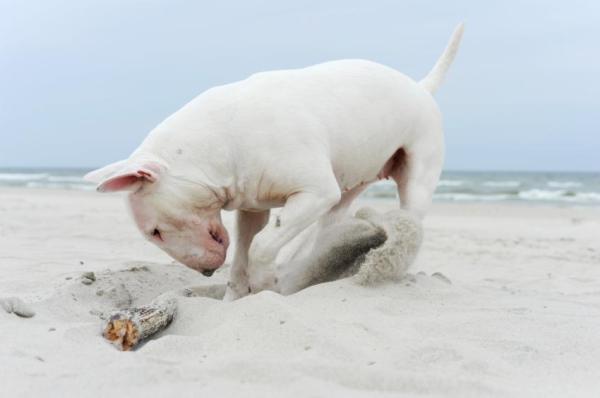
Other English dog breeds
We have shared some of the most common English dog breeds in the world, but this is not an exhaustive list. Below we share some other British dogs, some you may have heard of, others not:
- Beagle
- Jack Russell Terrier
- English Pointer
- Bloodhound
- Old English Sheepdog
- Smooth Fox Terrier
- Bedlington Terrier
- Parson Russell Terrier
- Golden Retriever
- Border Terrier
- Whippet
- Airedale Terrier
There are other English dog breeds not on our list. If there are some left out you feel strongly about, please feel free to comment below and share with the community.

If you want to read similar articles to English Dog Breeds List - With Pictures, we recommend you visit our What you need to know category.
1. Parker, H. G., Dreger, D. L., Rimbault, M., Davis, B. W., Mullen, A. B., Carpintero-Ramirez, G., & Ostrander, E. A. (2017). Genomic Analyses Reveal the Influence of Geographic Origin, Migration, and Hybridization on Modern Dog Breed Development. Cell reports, 19(4), 697–708. https://doi.org/10.1016/j.celrep.2017.03.079
https://www.ncbi.nlm.nih.gov/pmc/articles/PMC5492993/
2 Podberscek, A. L., & James A. S. (1996). The English Cocker Spaniel: preliminary findings on aggressive behaviour. Applied Animal Behaviour Science, 47(1), 75-89. https://www.sciencedirect.com/science/article/abs/pii/0168159195010122
3 Rusbridge, C. (2007). Chiari‐like malformation with syringomyelia in the Cavalier King Charles spaniel: long‐term outcome after surgical management. Veterinary surgery, 36(5), 396-405. https://dspace.library.uu.nl/handle/1874/20717
- Canine Inherited Disorders Database (CIDD) http://cidd.discoveryspace.ca/

